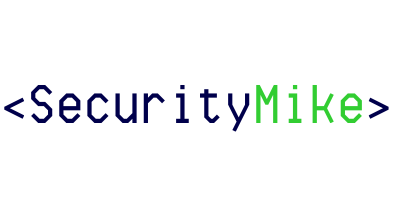Ransomware attacks have become a growing threat in the digital age. This form of cyber attack involves malicious software that encrypts a victim’s files and demands a ransom in exchange for the decryption key. The attackers typically demand payment in cryptocurrency, such as Bitcoin, which makes it difficult to trace the transactions. Ransomware attacks have been around for decades, but they have become more prevalent and sophisticated in recent years.
The first known ransomware attack occurred in 1989, when the AIDS Trojan was distributed on floppy disks. The malware claimed to be a program that could provide information about AIDS, but instead it encrypted the victim’s files and demanded a payment of $189 to a PO Box in Panama. Since then, ransomware attacks have evolved and become more widespread. In the early 2000s, attackers began using more advanced encryption algorithms, making it nearly impossible for victims to decrypt their files without paying the ransom.
Key Takeaways
- Ransomware attacks are a type of cyber attack that involves encrypting a victim’s data and demanding payment for its release.
- WannaCry ransomware emerged in 2017 and caused widespread damage across the globe, exploiting a vulnerability in Microsoft Windows.
- Petya ransomware followed in 2017, using a different technique to spread and infect systems.
- Ransomware tactics and techniques have evolved over time, with attackers using more sophisticated methods to evade detection and increase their chances of success.
- Alphv BlackCat ransomware is a new threat that targets specific industries and regions, with advanced features and capabilities that make it difficult to detect and mitigate.
The Emergence of WannaCry Ransomware
One of the most notable ransomware attacks in recent years was the WannaCry attack that occurred in May 2017. WannaCry spread rapidly across the globe, infecting hundreds of thousands of computers in over 150 countries. The attack targeted vulnerabilities in Microsoft Windows operating systems, exploiting a flaw that had been patched by Microsoft months earlier.
WannaCry was unique because it used a worm-like capability to spread itself across networks, allowing it to infect multiple computers within an organization. It also demanded a relatively low ransom amount, typically around $300, which increased the likelihood that victims would pay. The attack caused widespread disruption, particularly in healthcare organizations, where critical systems were affected and patient care was compromised.
The Global Impact of WannaCry Attack
The WannaCry attack had a significant economic impact on businesses and individuals worldwide. The total cost of the attack has been estimated to be in the billions of dollars. The attack disrupted operations in various industries, including healthcare, manufacturing, and logistics. Many businesses were forced to shut down temporarily while they dealt with the aftermath of the attack.
The WannaCry attack also highlighted the importance of cybersecurity and the need for organizations to have robust security measures in place. It served as a wake-up call for many businesses and individuals who had not taken ransomware attacks seriously before. The attack prompted governments and organizations to invest more resources in cybersecurity and to develop strategies for preventing and responding to future attacks.
The Rise of Petya Ransomware
Following the WannaCry attack, another major ransomware attack occurred in June 2017. Known as Petya or NotPetya, this attack targeted organizations primarily in Ukraine but quickly spread to other countries around the world. Petya used similar tactics as WannaCry, exploiting vulnerabilities in Windows systems and spreading through networks.
However, Petya differed from WannaCry in several ways. While WannaCry encrypted individual files on infected computers, Petya encrypted the entire hard drive, making it even more difficult for victims to recover their data. Petya also had a more sophisticated propagation mechanism, allowing it to spread rapidly within an organization’s network.
The impact of the Petya attack was significant, particularly for businesses that relied heavily on computer systems for their operations. Many organizations were unable to recover their data even after paying the ransom, as the attackers had no intention of providing a decryption key. The attack served as a reminder that paying the ransom does not guarantee that files will be decrypted.
The Evolution of Ransomware Tactics and Techniques
Ransomware attacks have evolved over time, becoming more sophisticated and difficult to detect. Attackers have started using social engineering techniques to trick victims into downloading or opening malicious files. Phishing emails, for example, may appear to come from a trusted source and contain a link or attachment that, when clicked or opened, infects the victim’s computer with ransomware.
Another significant development in ransomware attacks is the use of cryptocurrency for ransom payments. Cryptocurrencies like Bitcoin provide a level of anonymity that makes it difficult for law enforcement agencies to track the transactions. Attackers often demand payment in Bitcoin or other cryptocurrencies to avoid detection and prosecution.
The Advent of Alphv BlackCat Ransomware

One of the latest ransomware attacks to emerge is Alphv BlackCat. This new strain of ransomware has gained attention for its advanced capabilities and sophisticated encryption algorithms. Alphv BlackCat was first discovered in early 2021 and has since infected numerous organizations worldwide.
Alphv BlackCat spreads through various means, including phishing emails, malicious websites, and exploit kits. Once it infects a system, it encrypts the victim’s files using advanced encryption algorithms, making it nearly impossible to decrypt without the encryption key. The attackers then demand a ransom in Bitcoin in exchange for the decryption key.
Alphv BlackCat Ransomware: Features and Capabilities
Alphv BlackCat ransomware is known for its advanced features and capabilities. It uses a combination of symmetric and asymmetric encryption algorithms to encrypt files, making it extremely difficult for victims to recover their data without paying the ransom. The attackers also employ anti-analysis techniques to evade detection by security software.
One of the unique features of Alphv BlackCat is its ability to target specific file types, such as documents, images, and videos. This allows the attackers to maximize the impact of their attack by encrypting files that are most valuable to the victim. The ransom note left by Alphv BlackCat includes detailed instructions on how to pay the ransom and obtain the decryption key.
The Targeted Industries and Regions of Alphv BlackCat Ransomware
Alphv BlackCat ransomware has targeted a wide range of industries and regions. Like other ransomware attacks, it has affected organizations in sectors such as healthcare, finance, manufacturing, and government. The attackers often target industries that are more likely to pay the ransom quickly to minimize disruption to their operations.
Certain regions are also more vulnerable to ransomware attacks due to factors such as weak cybersecurity infrastructure and a lack of awareness about the threat. Developing countries, in particular, may be more susceptible to ransomware attacks due to limited resources for cybersecurity measures and a lack of education on the topic.
The Future of Ransomware Attacks: Predictions and Trends
The future of ransomware attacks is likely to see continued growth and sophistication. Attackers are expected to develop new techniques and tactics to evade detection and maximize their profits. One emerging trend is the use of artificial intelligence (AI) and machine learning (ML) by attackers to automate the process of infecting systems and encrypting files.
Another trend is the targeting of Internet of Things (IoT) devices. As more devices become connected to the internet, they become potential targets for ransomware attacks. IoT devices often have weak security measures in place, making them easy targets for attackers.
The Importance of Cybersecurity Measures in Protecting Against Ransomware Attacks
Given the increasing threat of ransomware attacks, it is crucial for businesses and individuals to take cybersecurity measures seriously. There are several best practices that can help protect against ransomware attacks:
1. Regularly update software and operating systems: Keeping software and operating systems up-to-date is essential for patching vulnerabilities that attackers can exploit.
2. Use strong, unique passwords: Using strong passwords that are difficult to guess can help prevent unauthorized access to systems.
3. Backup data regularly: Regularly backing up data ensures that even if files are encrypted by ransomware, they can be restored from a backup.
4. Implement multi-factor authentication: Multi-factor authentication adds an extra layer of security by requiring users to provide additional verification, such as a fingerprint or a code sent to their mobile device.
5. Educate employees on cybersecurity best practices: Training employees on how to recognize and avoid phishing emails and other social engineering techniques can help prevent ransomware attacks.
In conclusion, ransomware attacks have become a significant threat in today’s digital landscape. The emergence of attacks like WannaCry and Petya has highlighted the need for robust cybersecurity measures and increased awareness among businesses and individuals. As ransomware attacks continue to evolve, it is crucial for organizations and individuals to stay informed and take proactive steps to protect against these threats. By implementing best practices and investing in cybersecurity measures, businesses and individuals can minimize the risk of falling victim to ransomware attacks.
If you’re interested in the evolution of ransomware attacks and want to delve deeper into the hidden dangers of legitimate tools being weaponized, you should definitely check out this insightful article by Security Mike. It explores how seemingly harmless software like TeamViewer can be exploited by cybercriminals to carry out malicious activities. Understanding these risks is crucial in today’s digital landscape. Read more here. Additionally, if you’re concerned about the impact of digital deception in democracy and want to navigate the disinformation surrounding elections, Security Mike has another thought-provoking article that sheds light on this issue. Learn more here. Lastly, for those curious about the future of cyber warfare and its implications, Security Mike offers valuable insights in their article on this topic. Discover more here.
FAQs
What is ransomware?
Ransomware is a type of malicious software that encrypts a victim’s files and demands payment in exchange for the decryption key.
What is WannaCry?
WannaCry is a ransomware attack that occurred in May 2017, which affected over 200,000 computers in 150 countries. It exploited a vulnerability in Microsoft Windows operating systems.
What is Alphv BlackCat?
Alphv BlackCat is a new strain of ransomware that was discovered in 2021. It is known for its advanced encryption techniques and ability to evade detection by security software.
How have ransomware attacks evolved?
Ransomware attacks have evolved from simple, low-level attacks to more sophisticated and complex attacks that use advanced encryption techniques and target specific industries or organizations.
What are some common ways ransomware is spread?
Ransomware is commonly spread through phishing emails, malicious websites, and software vulnerabilities.
What can individuals and organizations do to protect themselves from ransomware attacks?
Individuals and organizations can protect themselves from ransomware attacks by regularly backing up their data, keeping their software up to date, using strong passwords, and being cautious when opening emails or clicking on links. They can also use anti-virus software and implement security measures such as firewalls and intrusion detection systems.

